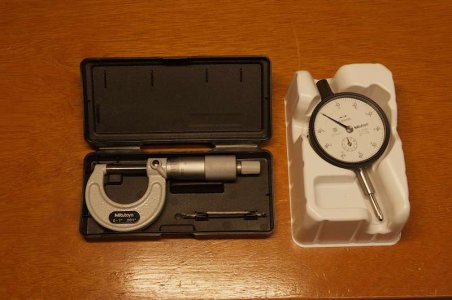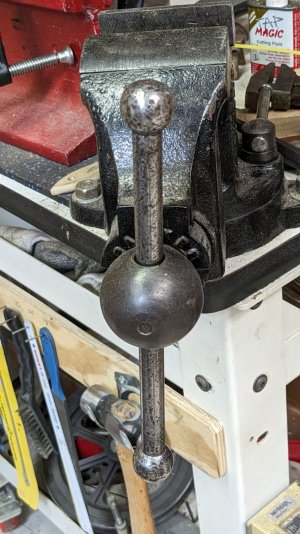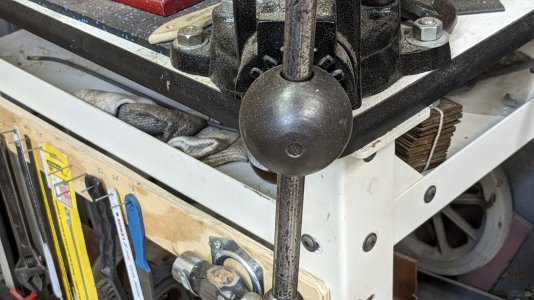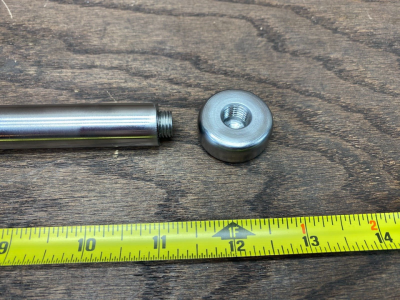- Joined
- Aug 6, 2015
- Messages
- 4,166
Where are the rubber pieces sourced from?I've got a 300S on one of my benches and it's a handy little vise, but definitely on the small side. I've been in so many machining and fabricating shops over the past 10 years I've lost count, and the most common vise you'll find is the 450S...big enough for serious work, but doesn't take up too much bench space, or put the work too high when it's mounted on a normal bench.
Just a suggestion, but the handle is starting to peen and hammer away on the spindle so you might want to address that. Normally they have rubber washers on the ends of the handle to prevent that, but someone removed and welded the ball end on at some point...probably to remove and straighten it. The ball ends are actually peened in place. If you carefully grind on the end you can remove enough to drive the handle out of the ball easily so no need to cut the ball off like they did (happens a lot).
Wilton used 11/16" handles on the medium size vises for some reason...3/4" would have been a lot easier. You could do this yourself, but if you want to save a bit of time I've got a handle ready that would work. I've largely gotten out of the vise restoration business, but still do them here and there, mostly Wiltons so when I make a handle, I usually make a couple so I've got one or two on the shelf. Nothing fancy, 1144 Stressproof, thick washers and the ball end needs to be peened in place with an oxyacetylene torch, then smoothed off with a flap disc.
View attachment 465623
If he does not want it, I will love to take it off your hands.





